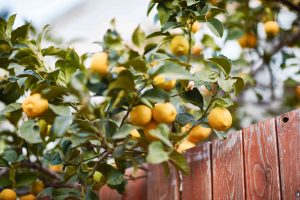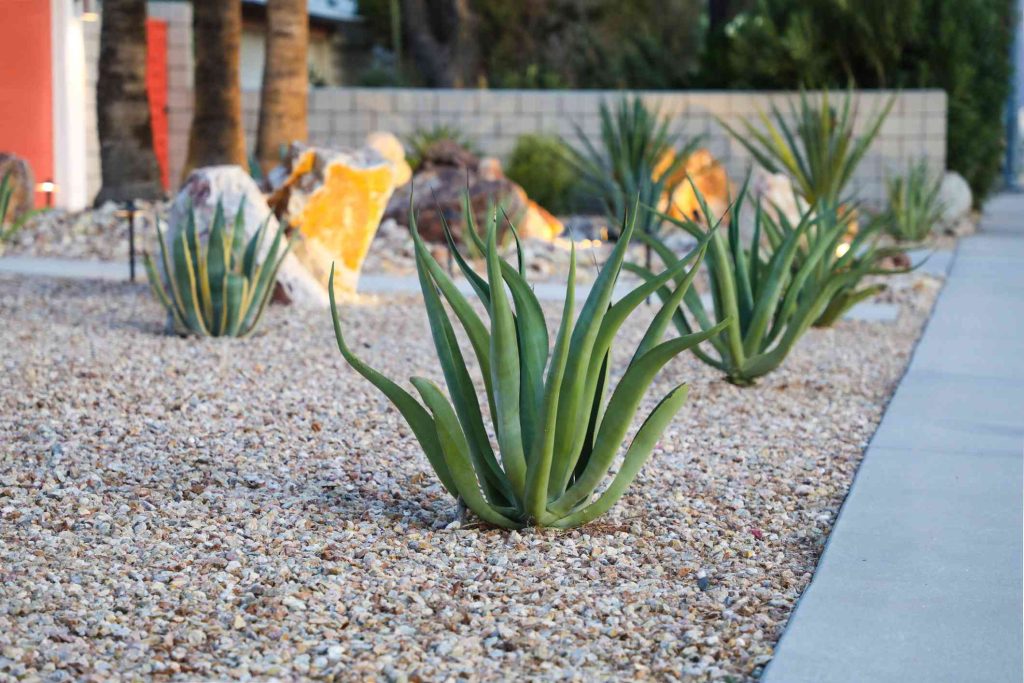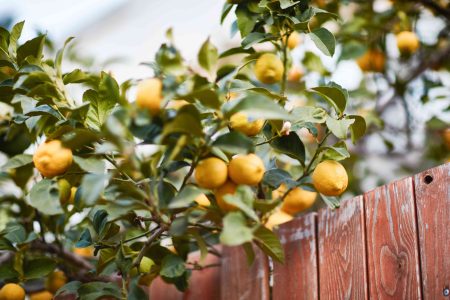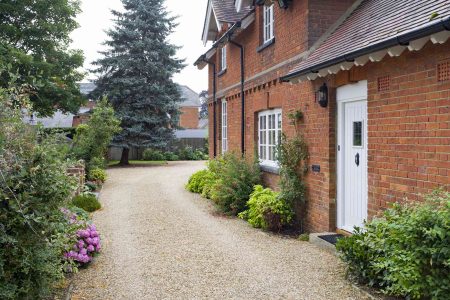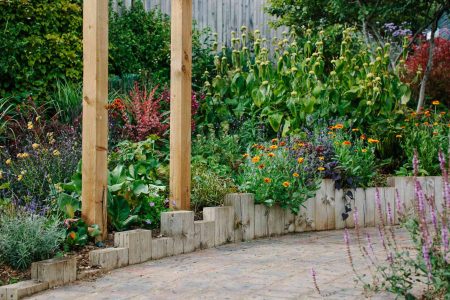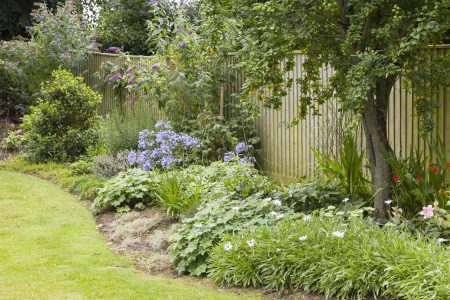Spiky plants add a tropical-inspired look to your garden that feels as if it would be right at home in a lushly landscaped resort. Depending on their size, the lines of these sleek, dramatic plants can be used as a focal point in your garden or as a border plant that adds a structured, define edge to a garden bed.
Spanning families including succulents, grasses, and cacti, these plants thrive in a variety of USDA growing zones, so you can have this striking look regardless of where you live. Plus, most of these plants are deer-resistant due to their spiky nature.
Here are 10 spiky plants to incorporate in your landscaping, whether you live in a climate that’s warm year-round or you’re looking for something that will be cold weather hardy.
Want more gardening tips? Sign up for our free gardening newsletter for our best-growing tips, troubleshooting hacks, and more!
-
01
of 10Krantz Aloe
Krantz aloe gives you both size and impact with its spiky foliage and vibrant red and orange flowers that bloom in the winter. The trunk is covered in rosettes of foliage, giving it a dramatic look. This variety of aloe thrives in full, direct sunlight, and it can tolerate drought.
- Name: Krantz aloe (Aloe arborescens)
- USDA Hardiness Zones: 9-11
- Light: Full
- Soil: Sandy, loamy, acidic
- Mature Size: 6-9 ft. tall, 6-9 ft. wide
- Deer Resistant: Yes
-
02
of 10New Zealand Flax
Sword-like leaves sprout like rays from the base of New Zealand flax. This spiky plant makes a statement, especially when grown in groups. While you’ll see green foliage most often, there are also varieties that come in yellow, pink, red, and bronze. New Zealand flax produces tubular red or yellow blooms that are a favorite of pollinators, including hummingbirds.
- Name: New Zealand flax (Phormium tenax)
- USDA Hardiness Zones: 9-11
- Light: Full sun to partial shade
- Soil: Well-drained soil, acidic
- Mature Size: 1-6 ft. tall, 1-3 ft. wide
- Deer Resistant: Yes
-
03
of 10Agave
The large, spiky leaves of agave make a dramatic statement in the garden, and some species are cold hardy. One plant can serve as a focal point with groundcover surrounding it. Agave grows best in full sun with rocky, well-draining soil, and, depending on the variety, you could have a plant that grows as large as 10 feet wide. Eventually, agave will bloom but, at that point, it will die. Often, it’s replaced with a new plant in the exact same spot.
- Name: Agave (Agave)
- USDA Hardiness Zones: 5-11
- Light: Full
- Soil: Sandy, well-drained, acidic, neutral
- Mature Size: 1–20 ft. tall, 1–10 ft. wide
- Deer Resistant: Yes
-
04
of 10Yucca
Yucca has a tropical look, though most species can survive temperatures as low as 10 degrees Fahrenheit. In the summer and fall, they’ll have white or pink blooms, particularly if they’re grown outside with the right mix of sun and shade. Their spiky leaves are actually sharp, so make sure to keep children and pets away, and be aware that their root systems can spread quickly, possibly damaging foundations and sidewalks.
- Name: Yucca (Yucca spp.)
- USDA Hardiness Zones: 4-11
- Light: Partial
- Soil: Sandy, well-draining, neutral, acidic
- Mature Size: 1-30 ft. tall, 3-15 ft. wide
- Deer Resistant: Yes
Continue to 5 of 10 below -
05
of 10European Fan Palm
European fan palm gives you that distinct spiky tropical look but in a cold-hardy plant that can tolerate temperatures as low as 10 degrees Fahrenheit. You can grow them with with a single trunk, giving the appearance of a small tree, or with multiple trunks for a more shrub-like look. In the spring, they’ll grow yellow flowers and small fruits.
- Name: European fan palm (Chamaerops humilis)
- USDA Hardiness Zones: 8-11
- Light: Full sun to partial shade
- Soil: Loamy, moist, well-drained, acidic, neutral, alkaline
- Mature Size: 6–15 ft. tall, 6–20 ft. wide
- Deer Resistant: Yes
-
06
of 10Prickly Pear Cactus
Prickly pear cactus has immediately recognizable flat, round pads that are covered in spikes, and its colorful pears appear after it blooms in the early summer. While these spiky plants have a look that is right at home in the desert, they actually fare well in colder weather. Just make sure you give your prickly pear cactus full sun and avoid overwatering, which can damage the plant.
- Name: Prickly pear cactus (Opuntia spp.)
- USDA Hardiness Zones: 4-11
- Light: Full
- Soil: Dry, sandy or gravelly, well-draining, slightly acidic to neutral
- Mature Size: 6 in. – 8-ft. tall and wide
- Deer Resistant: Yes
-
07
of 10Sea Holly
Sea holly is a more delicate take on a spiky plant, with sharp-looking metallic purple-blue flowers emerging from tall, spiky stems. These flowers have a cottage garden appearance, with blooming thistles covering the plants. They are perennials that will self-seed and come back year after year.
- Name: Sea holly (Eryngium planum)
- USDA Hardiness Zones: 5-9
- Light: Full
- Soil: Sandy, well-drained, acidic, neutral, alkaline
- Mature Size: 2–3 ft. tall, 1–2 ft. wide
- Deer Resistant: Yes
-
08
of 10Cordyline
Cordyline’s leaves are not only spiky, but have a formidable leathery texture. You’ll find it in dramatic colors that extend far beyond the classic green. There are red, yellow, purple, and even white varieties. While it’s grown as a perennial in warmer regions, you can also grow it as an annual in places with colder winters. Add it as a vibrant, architectural statement to a garden, placing it with enough room to show off their foliage.
- Name: Cordyline (Cordyline terminalis)
- USDA Hardiness Zones: 9-11
- Light: Full sun to partial shade
- Soil: Well-draining, acidic
- Mature Size: 3-6 ft. tall and wide
- Deer Resistant: Yes
Continue to 9 of 10 below -
09
of 10Windmill Palm Tree
When you want a spiky palm tree but don’t live in a palm tree region, windmill palm tree is the answer. This cold hardy palm can survive temperatures down to 10 degrees Fahrenheit, and it adds sharp-edged foliage to your garden, particularly when it’s grown at smaller sizes.
- Name: Windmill palm tree (Trachycarpus fortunei)
- USDA Hardiness Zones: 7-11
- Light: Full sun to partial shade
- Soil: Loamy, sandy, moist but well-drained, acidic, neutral, alkaline
- Mature Size: 10-40 ft. tall, 4-10 ft. wide
- Deer Resistant: Yes
-
10
of 10Blue Fescue
Blue fescue is a spiky ornamental grass that looks like sharp-edge silvery blue tufts emerging from the ground. It has a striking texture and color, and it’s often used as an edging plant for gardens. Blue fescue is a perennial that grows quickly, filling in your landscaping each year as it grows back.
- Name: Blue fescue (Festuca glauca)
- USDA Hardiness Zones: 4-8
- Light: Full sun to partial shade
- Soil: Moist, well-draining, neutral, acidic, alkaline
- Mature Size: 6-12 in. in high, 6-18 in. spread
- Deer Resistant: Yes
Read the full article here




